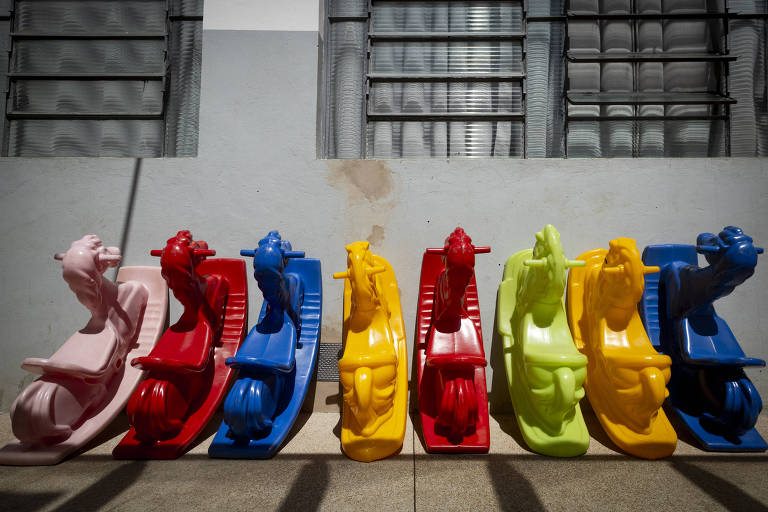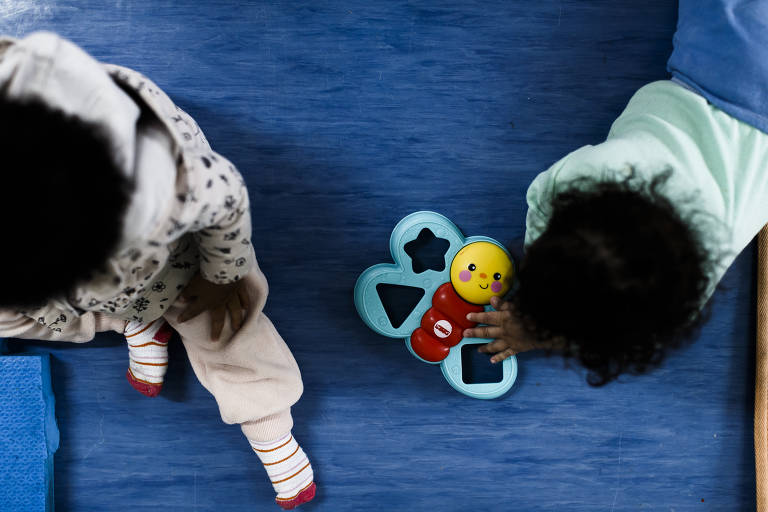Inequality in access to daycare increases between rich and poor in Brazil, study finds

Inequality in access to daycare between rich and poor is only growing in Brazil, according to a new study by Todos Pela Educação that will be published this Monday (11).
According to the survey, from 2016 to 2024, the gap in attendance between the poorest 20% and the richest 20% increased from 22 to 29.4 percentage points. The years 2020 and 2021 were disregarded due to the pandemic. Daycare centers serve children up to age 3, after which they are sent to preschool.
The study used data from the Continuous PNAD (National Household Sample Survey, from IBGE) and the School Census as a basis.
At the end of last year, 30.6% of children from poorer families were enrolled; among the richest, the rate reached 60%.
The majority of those who did not attend this stage were excluded by choice of their guardians, a proportion that is similar across all income brackets.
However, there is significant inequality when it comes to children not attending daycare due to limited access . The lower the income, the higher the percentage of people without a place, even though they demand the service.
Among the poorest, 36.5% are at home by choice and 28.3% due to lack of opportunity. Among the richest, the proportions are 30.2% and 6.1%.

The situation is even more dire for babies up to one year old: only 18.6% receive care. According to the survey, in 2024, one in four (24.8%) would not be attending the service due to some type of access barrier. Among the poorest, this figure is 34%.
In total, nearly 2.3 million children aged 0 to 3 are out of daycare due to lack of space. This number represents 60% of this population. At this age, education is not mandatory, but it is a right. In 2022, the Supreme Federal Court (STF) ruled that the government must guarantee spaces in daycare centers and preschools for children up to five years old.
The National Education Plan expected to reach 50% of children in nurseries by 2024. This did not happen.
In 2016, the percentage of children enrolled was 30.3%. The national rate grew 9.5 percentage points in eight years, reaching approximately 40% in 2024. That year, the highest enrollment rate for children aged 0 to 3 was in the Southeast (46.9%). The North had the lowest (22.5%).
Early childhood education is the responsibility of municipalities, which have often faced budgetary constraints. State governments, as well as the federal government, are obligated to collaborate with city halls.
Last year, the survey "Portrait of Early Childhood Education in Brazil: Access and Availability of Places ," conducted by the Office for the Coordination of Effective Education Policy in Brazil in partnership with the Ministry of Education, showed that 44% of the country's municipalities reported having waiting lists for daycare places, with 632,763 enrollment requests . The number may vary, as 7% of municipalities do not make this identification .
In preschool, the first mandatory stage of basic education , 94.6% of 4- and 5-year-olds are enrolled. The national goal was to make access universal by last year. Even so, by 2024, more than 329,000 children were out of the classroom.
Generally speaking, the most common reason for this is the choice of those responsible. Among poorer families, the main obstacle is limited access—a reality practically nonexistent among the richest.
"Although there are advances to be recognized, the pace of expansion of access to early childhood education remains below what is necessary," says Manoela Miranda, educational policy manager at Todos Pela Educação.
Without the adoption of structural policies for expansion with quality and equity, she continues, "Brazil will continue to deprive a significant portion of its children of the right to full development in their first years of life."
The survey also reveals significant regional disparities in access to early childhood education. The North and Northeast regions have the most critical indicators, both in daycare and preschool.
In 2024, São Paulo had the highest daycare attendance rate (56.8%), while Amapá had the lowest (9.7%). In preschool, only Piauí achieved universal care, while Amapá had 69.8% of 4- and 5-year-old children served.
uol






